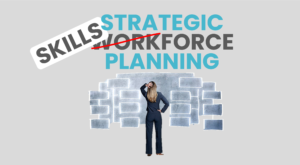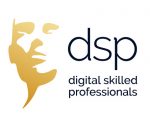In today’s fast-paced and competitive business environment, traditional hierarchical structures are no longer enough to drive success.
Building a skills-based organization is emerging as a new operating model that can help companies stay ahead.
What is a Skills-Based Organization?
A skills-based organization (SBO) is a type of organizational structure that prioritizes the development and utilization of employee skills over traditional job roles and titles.
In an SBO, employees are organized into cross-functional teams based on their individual skill sets and abilities, rather than their job titles or functions.
Simply put, a SBO covers an organizational structure where employees are grouped together based on their skills and abilities, rather than their job titles or functions. This allows for more flexibility in team composition and encourages cross-functional collaboration, which can result in increased innovation, productivity, and adaptability.
Additionally, SBOs typically prioritize ongoing employee training and development to ensure that teams have the necessary skills to address evolving business needs.
Key steps to follow
Building a skills-based organization (SBO) requires a shift in thinking and a willingness to depart from traditional hierarchical structures. To establish an SBO as a new operating model, there are several key steps to follow.
First, it’s essential to identify the company specific skills and competencies needed to achieve your organization’s strategic goals. Once you have a clear understanding of the necessary skills, you can begin to organize employees into cross-functional teams based on those skills.
Next, it’s critical to create a culture that encourages ongoing learning and development. This includes providing opportunities for employees to learn new skills and take on new challenges, especially with the rise of AI tools like ChatGTP of OpenAI. It’s also important to establish metrics and goals for individual and team performance that focus on skill development and collaboration.
Finally, technology and transparency of skills-data will play a significant role in the adoption for a SBO and is vital to make all value-driven decisions related to employees based on skills data. A clear skills strategy should be part of the overall business strategy.
Overall, building an SBO as a new operating model requires a commitment to ongoing learning and development, a willingness to embrace new ways of working, and a focus on collaboration and skill-based team composition. By prioritizing these elements, organizations can position themselves for success in today’s rapidly changing business environment.
People come to work to work, not to learn. Start the conversation for a skills based strategy across the organization for common understanding before implementing.
Marco Mullers – Vice President Learning and Development at DSM
A Skills-Based Organization follow five principles:
1. Work is reorganized into a flexible portfolio of skills and structures that go beyond traditional roles and limitations of job descriptions, so skills-based.
2. Workers are viewed as unique individuals with a distinct set of skills and capabilities, rather than mere employees in predefined roles.
3. Decisions regarding work and workforce are based on skills through skills dialogs and skills development instead of job titles, covering aspects such as work allocation, performance management, recruitment, and rewards.
4. Skills management includes skills strategy, skills data, technology and governance that are vital in making value-driven decisions based on skills data.
5. Skills data is transparent, decentralized and accessible to all employees to find skilled colleagues to learn from mentors and find the right person for the right project or task to get the job done.
Transforming into a skills-based organization (SBO) involves several key elements. These include:
Skill Strategy: There should be an effective communication of skill development’s purpose to employees and utilization in the context of overall business strategy. The skills strategy ensures that employees understand how their skills contribute to the organization’s success and motivates them to take ownership of their learning and development, creating a culture of continuous learning, innovation, and retention of top talent. The core is employee-centric and vital in making value-driven decisions based on skills data.
Skill Inventory: This involves creating a comprehensive list of the skills and competencies required to achieve the organization’s strategic goals. The skill inventory serves as a foundation for building skill-based teams and identifying skill gaps that need to be addressed.
Cross-functional Teams: In an SBO, employees are grouped into cross-functional teams based on their skills and abilities, rather than their job titles or functions. These teams can work on projects that require diverse skill sets, which encourages collaboration and innovation.
Performance Management: In an SBO, performance management focuses on skill development and collaboration, rather than individual performance metrics. Teams are evaluated on their ability to work together effectively and achieve project goals, rather than individual contributions.
Skills dialogs: It’s important to involve regular one-on-one meetings between employees and managers about their skills, strengths, and development opportunities. These conversations help employees, managers and teams understand how their skills align with the organization’s goals, and provide a framework for setting goals and developing new skills. Also Employee one-on-one meetings help managers to understand what drives their direct reports and how they want to grow professionally.
Skills touch points: Skills touchpoints are an important part of the SBO building blocks for the employee journey within an organization. From the moment an employee joins an organization, they begin to build their skills and contribute to the organization’s goals. Skills touchpoints refer to the moments in an employee’s work experience where their skills are utilized or developed. These touchpoints can occur in formal settings, such as training programs or job rotations, or informally, such as in conversations with colleagues or while working on a project. Identify the skills touchpoints and utilize them with real-time skills insights of their employees.
Skills data and technology: Technology, including skills management software (SaaS), provides valuable skills data to support SBO development, enabling skill gap identification and promoting skills transparency among employees. The right tools provide insights and fosters a culture of learning and collaboration critical for effective communication and collaboration empowering employee growth.
Overall, building an SBO requires a holistic approach that addresses all of these elements. By prioritizing ongoing learning and development, cross-functional collaboration, and technology, organizations can position themselves for success in today’s rapidly changing business environment.
How to implement a Skills-Based Organization?
Building and implementing a skills-based organization involves several steps. First, it is important to conduct a skills assessment to identify skill gaps and strengths across the workforce. Next, cross-functional teams should be formed to collaborate and work together to achieve organizational goals. Performance management systems should be updated to focus on skills development and career growth.

Skills dialogs and skills touch points should be integrated into the employee journey to promote a culture of continuous learning. Technology, including skills management software, should be utilized to enable effective communication and collaboration across different functions and geographies. Finally, recruitment and talent development strategies should align with the organization’s skills-based approach. Implementation requires buy-in from leadership and ongoing communication with employees to ensure that the SBO model is successful.
Who is building and maintaining the Skills-Based Organization?
The responsibility of building and maintaining a skills-based organization lies with the leadership and management of the organization, who are accountable for ensuring that the SBO model is effectively implemented and sustained.
Transitioning to a skills-based organization requires CHROs to lead the formulation of skills strategies, with the CEO and C-suite driving the change across the organization.
The CHRO should redesign people processes around skills instead of jobs, embedding a language of skills and aligning skills with the organizational framework.
New capability in the people function should be built in skills analysis, planning, and AI-based HR technology tools, and new skills strategies should be integrated into critical people processes.

Reorganizing talent teams and processes around skills can improve performance and responsiveness, breaking down traditional functional silos in the People Function by creating cross-functional teams responsible for forecasting the most critical skills, effective strategies for skills development, and internal mobility.
CHROs and their teams must take a holistic perspective on skills across the organization to build a skills-based culture, empowering employees to take ownership of their skills development and career growth.
In summary, the key players on an operational level in building and maintaining a skills-based organization are the managers and supervisors, senior leadership, HR and Learning & Development teams, and employees. Each of these players has a unique role to play in the successful implementation of the SBO model, and they must work together to create a culture of continuous learning and development.
Examples of Skills Based Organizations
Unilever – At Unilever, an internal talent marketplace enables skills to fluidly move to projects and tasks across the organization, either as a permanent employee or as a “U-Worker”—a worker who has a guaranteed minimum retainer along with a core set of benefits who contracts with Unilever for a series of short-term projects.
Google – Google is a company championing skills-based hiring and supporting STARs, workers Skilled Through Alternative Routes.
Final words
Transforming into a Skills-Based Organization depends on what is already in place and what size of the company you are working in.
How to start? Focus on the following conclusion. The skills-based organization (SBO) model prioritizes the development and utilization of employee skills over traditional job roles and titles, increasing innovation, productivity, and adaptability. Building an SBO requires identifying specific skills, creating a culture of learning, and leveraging technology.
The 7 elements are skills strategy, skill inventory, cross-functional teams, performance management, skills dialogs, skills touch points, skills data & technology.
Start by developing a skills strategy, conducting a skills assessment, forming cross-functional teams, integrating skills dialogs and touch points, and utilizing technology.





